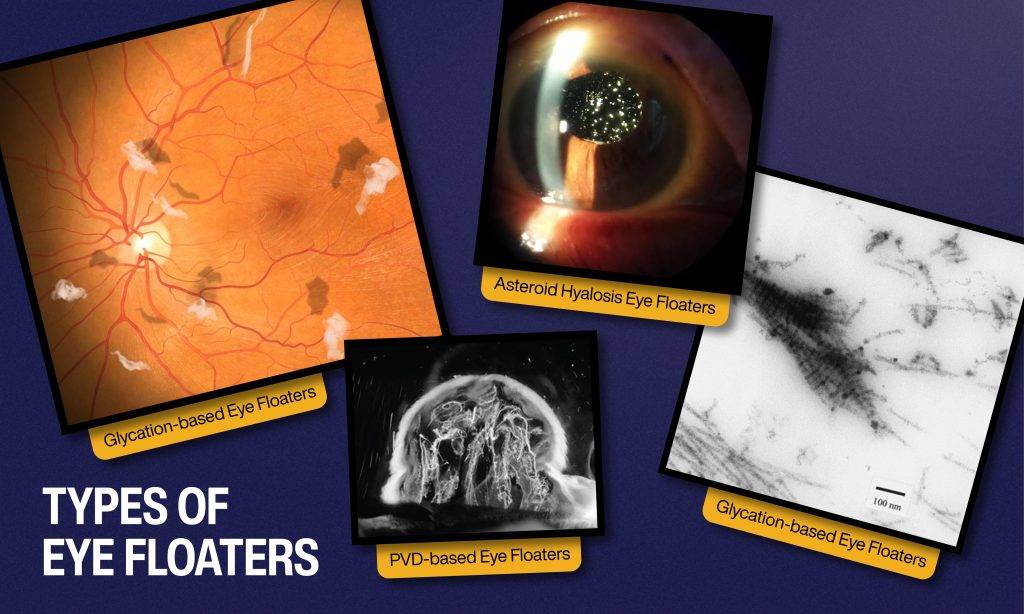SUBSCRIBE AND SAVE! | SIGN ME UP!

Written by MacuHealth
Reviewed by Jim Stringham, Ph.D.
Eye floaters can meddle with your daily activities. Generally, the typical cause is the clumping of collagen fibers inside the vitreous body, the gel-like structure inside the eye. Glycation, a process in which the surface of collagen is oxidized and/or exposed to relatively high sugar levels, is linked as the cause. Subsequently, these clusters cast shadows on the retina and appear as squiggly lines, threadlike strands, cobwebs or rings.
However, there are several different types of eye floaters that we may experience throughout our lifetime. And with proper supplementation and nutrition, the condition is manageable, especially for collagen-based floaters. In order to help patients discern what they’re experiencing, we’ll look at these eye floaters and indicate which ones are manageable.
These types of eye floaters can form around the tenth week of pregnancy and occur when the hyaloid artery, which provides the eye with nutrients in the womb, pulls away from the lens. The process occasionally causes “debris” and is seen as floaters. These aren’t pieces of collagen from the vitreous but rather bits of the hyaloid artery and are not manageable with nutrition.
These types of eye floaters appear as white opacities in the vitreous, or stars shining in the night sky, and move around like typical floaters. They’re associated with age and are composed of calcium soaps, not collagen, and are not manageable with nutrition. Their cause is unknown.
Floaters brought on by posterior vitreous detachment occur when the vitreous body physically pulls away from the posterior pole of the retina. This process causes relatively large, collagen-based floaters to detach and release into the vitreous humor.
The Floater Intervention Study (FLIES)1 showed that when the vitreous receives a continuous supply of antioxidant and enzymatic nutrients, the results showed a significant reduction in collagen-based floaters. These types of eye floaters are posterior vitreous detachment and glycation based.
The trusted scientists behind MacuHealth offer this patented nutrient blend under the name of VitreousHealth. It can be found online and through eye care professionals.